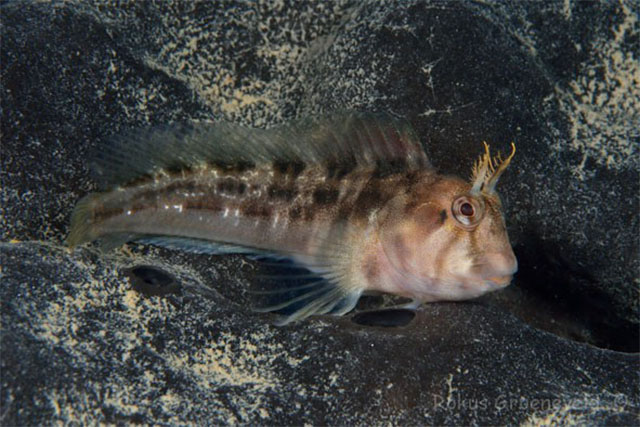| Blenniidae (Combtooth blennies), subfamily: Salariinae |
| 13 cm TL (male/unsexed) |
|
benthopelagic; brackish; marine |
| Eastern Indian Ocean (Australia) to Southwest Pacific (New Zealand). |
|
Dorsal spines (total): 12-12; Dorsal soft rays (total): 16-19; Anal spines: 2-2; Anal soft rays: 19-20. Dorsal fin with slight notch over posterior spines; caudal and pectoral fins rounded. Pale to ash-grey in color; young with moderate-sized dark blotches along sides; adults finely spotted (Ref. 9002). |
| Adults are found in rock pools and shallow estuaries, commonly under jetties along tops of pylons (Ref. 9002). Oviparous. Eggs are demersal and adhesive (Ref. 205), and are attached to the substrate via a filamentous, adhesive pad or pedestal (Ref. 94114). Larvae are planktonic, often found in shallow, coastal waters (Ref. 94114). |
|
Least Concern (LC); Date assessed: 27 March 2009 Ref. (130435)
|
| harmless |
Source and more info: www.fishbase.org. For personal, classroom, and other internal use only. Not for publication.
